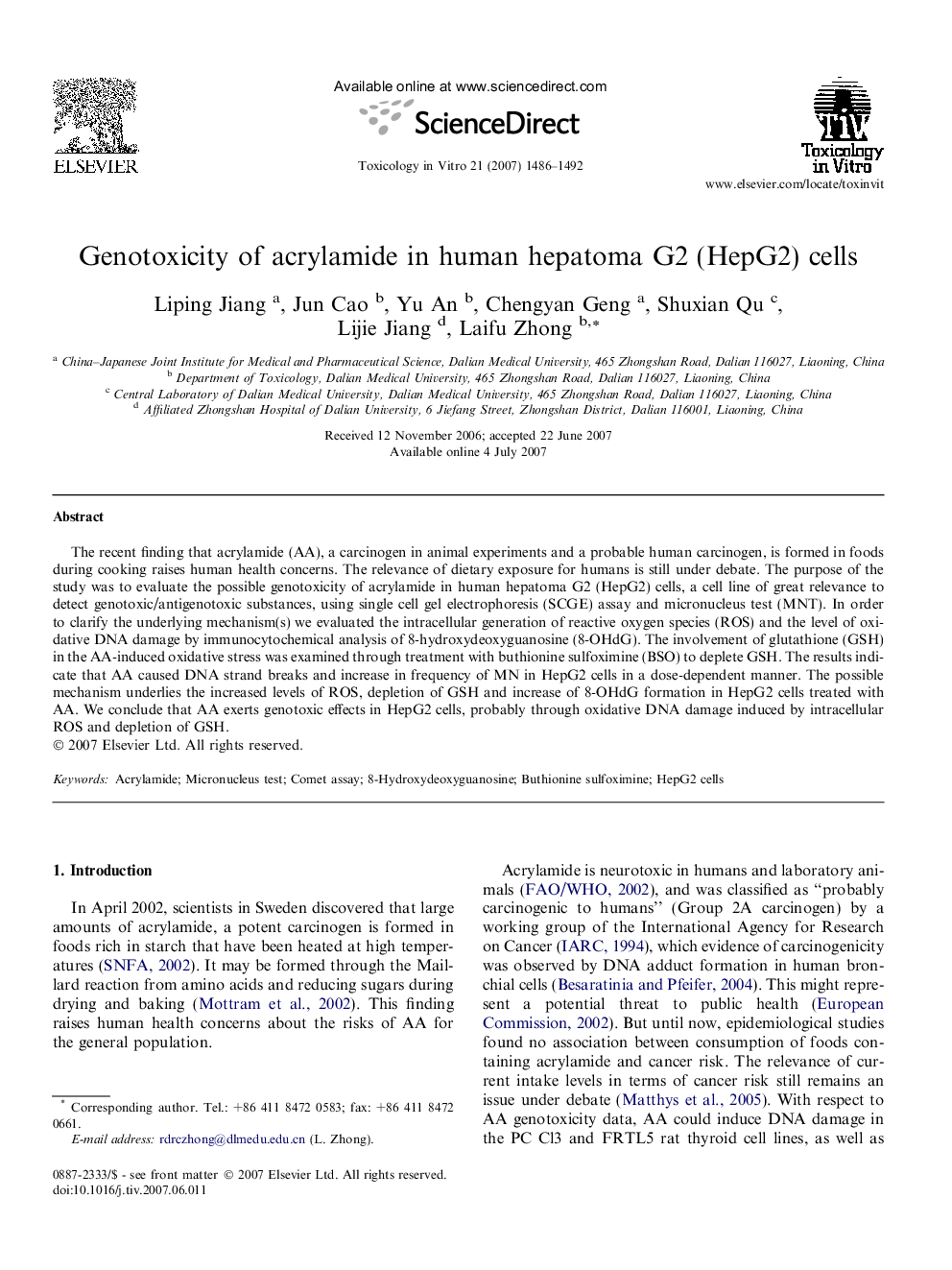| کد مقاله | کد نشریه | سال انتشار | مقاله انگلیسی | نسخه تمام متن |
|---|---|---|---|---|
| 2603706 | 1133831 | 2007 | 7 صفحه PDF | دانلود رایگان |

The recent finding that acrylamide (AA), a carcinogen in animal experiments and a probable human carcinogen, is formed in foods during cooking raises human health concerns. The relevance of dietary exposure for humans is still under debate. The purpose of the study was to evaluate the possible genotoxicity of acrylamide in human hepatoma G2 (HepG2) cells, a cell line of great relevance to detect genotoxic/antigenotoxic substances, using single cell gel electrophoresis (SCGE) assay and micronucleus test (MNT). In order to clarify the underlying mechanism(s) we evaluated the intracellular generation of reactive oxygen species (ROS) and the level of oxidative DNA damage by immunocytochemical analysis of 8-hydroxydeoxyguanosine (8-OHdG). The involvement of glutathione (GSH) in the AA-induced oxidative stress was examined through treatment with buthionine sulfoximine (BSO) to deplete GSH. The results indicate that AA caused DNA strand breaks and increase in frequency of MN in HepG2 cells in a dose-dependent manner. The possible mechanism underlies the increased levels of ROS, depletion of GSH and increase of 8-OHdG formation in HepG2 cells treated with AA. We conclude that AA exerts genotoxic effects in HepG2 cells, probably through oxidative DNA damage induced by intracellular ROS and depletion of GSH.
Journal: Toxicology in Vitro - Volume 21, Issue 8, December 2007, Pages 1486–1492